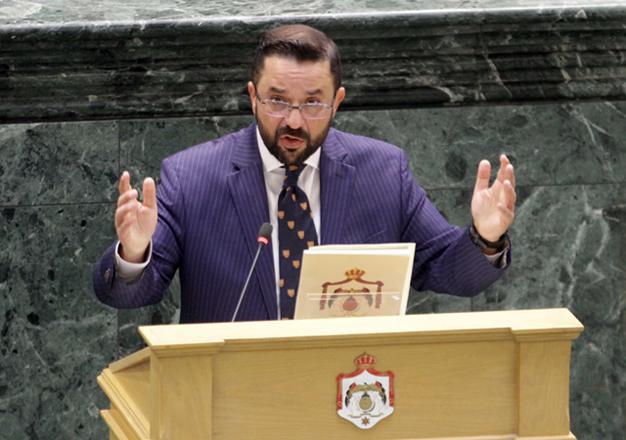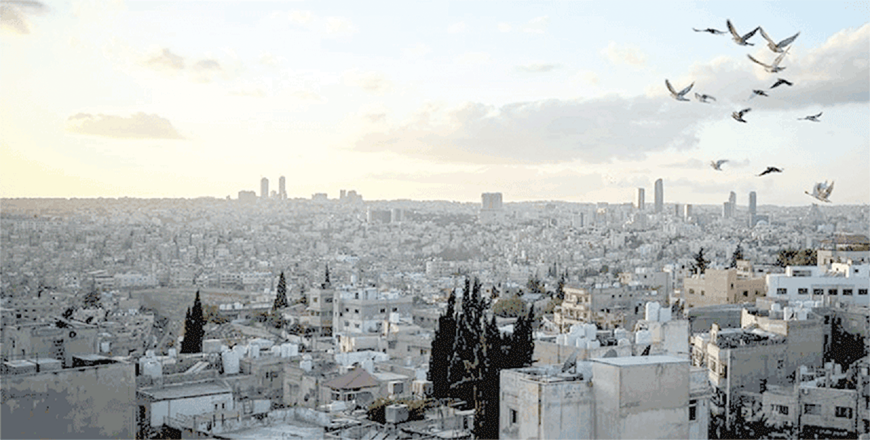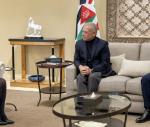You are here
Report outlines solutions to economic challenges
By JT - Oct 15,2017 - Last updated at Oct 15,2017
AMMAN — The Social and Economic Council has launched a detailed and analytical study that went through the most important regional developments and events between 2011 and 2017, and their direct and indirect impacts on the national economy.
The study reviewed regional developments and their repercussions on the actual gross domestic product, (GDP) actual income per capita, monetary policy, public expenditure and foreign currency reserves, Al Rai Daily published on Sunday.
In the recommendations, the study called for a strategic, predictive policy in terms of regional events, in a way that challenges can be changed into opportunities, and suggested raising the level of competitiveness of the Jordanian economy through making it more flexible in dealing with external events.
It also recommended focusing on development through establishing new entrepreneur projects and supporting them in a way that helps them survive.
The study showed that the economic growth went through many changes between 1993 and 2016, showing that the GDP grew by 5.3 per cent between 1993 and 1995, which followed the return of Jordanians after the second Gulf war.
The return of around 200,000 Jordanians from Kuwait in 1992 resulted in a 14.3 per cent decline in the economic growth rate, before starting to invest their savings in the Kingdom.
In the 1996-1999 period, growth rates went down due to Israeli procedures towards the Peace Treaty with Jordan, and the killing of German tourists in Aswan, Egypt, which contributed to a decline in tourist revenues in the Kingdom.
Between 2000 and 2003, the growth rate stood at 4.9 per cent, before registering further growth rates after the third Gulf war and the influx of rich Iraqis into Jordan and contributing to an “important growth era” that lasted to the third quarter of 2008.
The growth rate in 2005 stood at 8.6 per cent, and registered an 8.1 per cent increase in each of 2006 and 2007 as a result of Iraqi investments and the movement of donor headquarters into the Kingdom.
In 2012, the growth rate registered a decline of 2.3 per cent, due to a drop in foreign investment rates and the impact of foreign events on the national economy.
The study showed that the impact of the Syrian crisis on Jordan started with the entry of 100,000 Syrians to Jordan and the decline in the commercial exchange volume by half, especially that 40 per cent of Jordanian exports used to pass through Syria.
On the actual income per capita, the study showed that population growth between 2011 and 2016 reduces the rate of actual growth rate of GDP.
The income per capita started to decline with the beginning of the “Arab spring” and worsened with refugee influxes, rise in energy prices and border closures with Syria and Iraq.
As for the monetary policy related to the public expenditure, the report reviewed the item through three stages; the first between 2005 and 2007, which witnessed an increase in GDP and government expenditure, where the growth rate stood at 8.14 per cent and expenditure rate at 13 per cent.
During the 2008-2010, the financial credit and Egyptian gas crises started contributing to decreasing the growth rate to 5.3 per cent, where the government reduced expenditure by 8 per cent.
The 2012-2016 period witnessed the start of an economic deflation, where government expenditures rose by 3.3 per cent and the GDP registered a growth rate of 2.59 per cent.
As for the public debt, it witnessed a drop in 2008, and Jordan increased its domestic loans by JD2,059 million in application of its policy that aimed at avoiding foreign loans.
Between 2009 and 2011, the government increased its lending, especially from internal sources, where the debt went down by 15 per cent, before registering an annual increase in the public debt of 13 per cent between 2011 and 2016.
As for foreign currency reserves, the study recommended the government to acquaint the public with the concept of foreign currency reserves and its relation with imports and the safe period of covering the costs of the Kingdom’s imports.
As for the tourism sector, the study highlighted the importance for the government to benefit from the country’s stability, referring to the government’s relative success in reducing negative impacts of the Syrian crisis on tourism in Jordan.
Regarding the energy sector, the study noted that due to the continuous decline in international prices of energy, the government has to review local prices that include many taxes.
Also, the study showed that addressing high costs of energy lies in diversifying energy sources, especially through using solar energy.
In terms of jobs and unemployment, the report said that granting Syrian refugees work permits will contribute to alleviating the negative impacts of refugee crisis in the national economy.
As for the inflation, the study said that it is not a bad thing by its own, but when its occurrence with deflation in economic activities means that all people will feel annoyed because their incomes will not help them follow the same level of consumption.
On foreign trade, Jordan has to create alternative courses for countries it exports to and imports from, and has to engage in trading products of high added value.
The Kingdom has also to be ready for reconstruction projects in Syria and Iraq, which will boost exports to these two countries.
Related Articles
AMMAN — The government on Thursday endorsed the 2025 draft state budget law and will refer it to the Lower House for deliberation in the com
AMMAN — The government on Monday announced the draft general budget for the fiscal year 2022, projecting public expenditures at JD10.0668 bi
AMMAN — The European Bank for Reconstruction and Development (EBRD) is forecasting modest economic growth in 2023 in the southern and easter



















